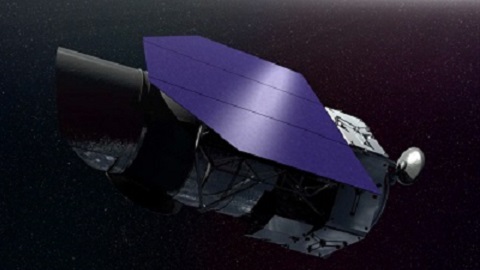NASA is commencing work on the Wide Field Infrared Survey Telescope (WFIRST), the successor to the Hubble and James Webb space telescopes.

After several years of design studies, NASA announced this past week that formal work will begin on the next-generation space observatory to follow the Hubble and James Webb space telescopes: the Wide Field Survey Telescope (WFIRST).
Seeing at infrared wavelengths, WFIRST promises to revolutionize astronomy with the potential to see a billion galaxies and more than 2,500 exoplanets over the course of its mission. WFIRST sports a single 2.4-meter-diameter mirror that's comparable in size to HST's primary but smaller than Webb's, so its vision is equivalent to Hubble's and less sharp than Webb's. But its field of view is 100 times larger than either of its predecessors.

NASA
Originally conceived as the Joint Dark Energy Mission, WFIRST was the number one mission on the astronomy community's wish list as expressed in the National Research Council's 2010 decadal survey.
Now set to launch in the mid-2020s, WFIRST has a fascinating origin story. In a true swords-to-plowshares moment, the U.S. National Reconnaissance Office donated two surplus mirrors to NASA back in 2011. After some discussion, NASA officials decided to use one of these for WFIRST. Though the existence of a ready-made mirror does speed development and aid the budget, a significant amount of time and money will still go into the development of instrumentation, namely the telescope's wide-field and coronagraphic imagers. NASA has yet to announce plans (or funding) for the other donated mirror.
The hand-me-down NRO mirror slated for WFIRST allows for a faster focal ratio (f/7.8 compared to Hubble's f/24) and therefore a wider field of view than was originally conceived for JDEM. The new design also features a starlight-blocking coronagraph, which will enable WFIRST to discern exoplanets hiding in the blinding light of their host star. The James Webb Space Telescope is also equipped with a coronagraph for its NIRCam, but WFIRST will have the first of a new generation of high-contrast stellar coronagraphs developed for space.

NASA/Goddard
“WFIRST has the potential to open our eyes to the wonders of the universe, much the same way Hubble has,” John Grunsfeld (NASA) said in a recent press release. “This mission uniquely combines the ability to discover and characterize planets beyond our own solar system with the sensitivity and optics to look wide and deep into the universe in a quest to unravel the mysteries of dark energy and dark matter.”
Like JWST, WFIRST will probably deploy to the L2 (anti-sunward) Lagrangian point 750,000 miles beyond the Moon's orbit. And the two missions will complement each other: while WFIRST's wide field of view will enable it to scour a large swath of infrared sky, JWST will peer deeper into the universe, finding objects that are fainter and farther away.
WFIRST Science: Dark Energy and Exoplanets
The two main themes WFIRST will address are dark energy and exoplanets. Its wide-field imager will search for Type Ia supernovae and gravitationally lensed galaxies across the universe in an effort to better understand dark energy and its effects on the acceleration of cosmic expansion. In doing so, WFIRST will complement the European Space Agency's Euclid dark energy mission, set to launch around 2020. In addition, the wide-field imager aims to find thousands of exoplanets via microlensing surveys.
The telescope's coronagraphic imager will home in on large exoplanets, down to 'super Neptunes', that orbit close to their host star, enabling studies of their atmospheres and compositions. WFIRST will work with missions such as the Terrestrial Exoplanet Survey Satellite (TESS) set to launch in 2017, as well as with efforts that are already directly imaging exoplanets from the ground such as the Gemini Planet Imager.
“In addition to its exciting capabilities for dark energy and exoplanets, WFIRST will provide a treasure trove of exquisite data for all astronomers,” said project scientist Neil Gehrels (NASA GSFC) in a recent press release.
WFIRST will continue the legacy of NASA's orbiting telescopes that began with the Hubble, Spitzer, and Chandra "Great Observatories" and continues with JWST. And watch for the proposed High Definition Space Telescope that could follow in these telescopes' footsteps sometime in the 2030s.
Learn more about the mission in this recent Google Hangout with some of the key players:
 1
1









Comments
Anthony Barreiro
February 22, 2016 at 4:42 pm
I find it rather sad that an unwanted castoff from an obscure spy agency is bigger and better than what NASA can afford to create on their own.
You must be logged in to post a comment.
You must be logged in to post a comment.